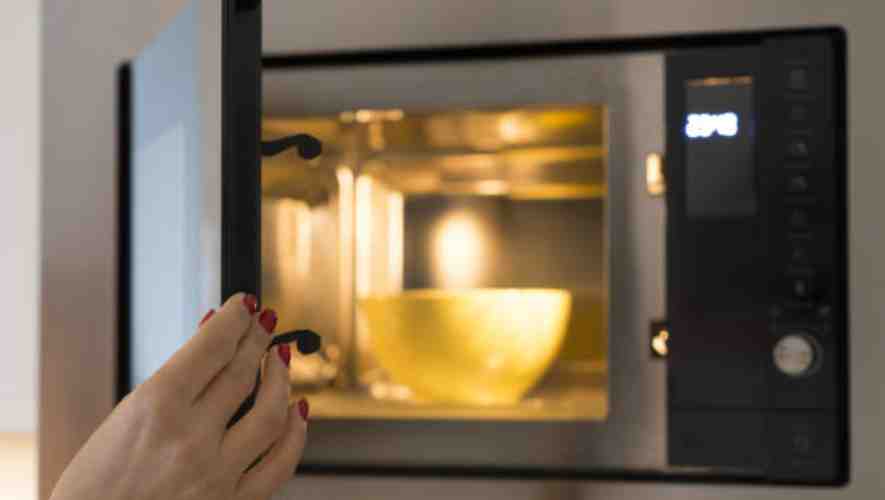Have you ever wondered if your microwave interferes with your WiFi when you’re just trying to heat up some food? It’s not just a myth—both microwave ovens and Wi-Fi routers often operate on the same frequency, which can lead to interference. This happens because microwave ovens pump out energy to heat food using a part of the electromagnetic spectrum that Wi-Fi routers also use to transmit data. When both devices are working at the same time, this can create noise in the WiFi signal, impacting your internet connectivity.
Do Microwave Ovens Interfere with WiFi? Yes, microwave ovens can interfere with Wi-Fi signals. This occurs because both microwaves and Wi-Fi routers operate on similar frequencies, around 2.4 GHz. When a microwave is in use, it may emit stray electromagnetic radiation, which can disrupt the Wi-Fi signal.
Fortunately, there’s a straightforward fix to this annoying issue. Most modern Wi-Fi routers offer dual-band functionality, allowing you to switch to a 5GHz frequency band, which is less likely to overlap with the frequency used by microwave ovens. This switch can significantly reduce interference and improve your internet experience. Additionally, ensuring that your microwave and other electrical devices are functioning correctly and the power is safely contained can also help minimize any potential interference, letting you enjoy your online activities without disruption.
Does Your Microwave Oven Mess with Your Wifi Signal?

Ever wondered if your microwave oven could be the reason why your latest binge-watch session buffered right at the climax? Well, it’s not as far-fetched as it sounds. Microwave ovens and WiFi signals could be at odds more often than you think. Here’s the lowdown on how your microwave could be messing with your WiFi signal, and what you can do about it.
Microwave ovens operate using electromagnetic radiation, typically at a frequency of 2.4 GHz, which is the same frequency used by many WiFi routers. This shared frequency can sometimes lead to what’s known as microwave interference. When you’re heating up your leftovers, the microwave can emit a burst of energy strong enough to disrupt the WiFi signal. This is particularly noticeable if your microwave is older or has a damaged door seal, as this can cause more significant leakage of these waves.
The interference generally affects devices that are on the same 2.4 GHz band. This can include not just your computer or phone, but also tablets, smart TVs, and other connected devices. Since 2.4 GHz offers a wider range and better wall penetration, it’s commonly used in many households. However, it’s also more likely to encounter congestion and interference from other household devices like cordless phones, baby monitors, and yes, your microwave oven.
If you’re experiencing slower internet speeds or dropped connections while you microwave your food, here’s a couple of things you could try. First, see if your router, access point, or other network devices support the 5GHz band. The 5GHz frequency is faster and generally less crowded than 2.4 GHz, making it less susceptible to interference from microwaves. Changing to a 5GHz connection can provide a more stable and robust internet connection.
You can also move your router further away from the microwave oven. Increasing the distance between your router and the microwave minimizes the chances of interference. Additionally, ensure your microwave is well-maintained and its door seal is intact to prevent leakage of waves.
Testing your network speeds with and without the microwave operating can give you a clear picture of how much impact there is. Regularly update your router’s firmware too; newer software often means better management of interference and overall improved performance.
Finally, if all else fails, consider wiring critical devices directly to your router with a cable. A direct cable connection eliminates the issue of interference altogether and can deliver a stable internet connection without the hassles of wireless signals.
Remember, a little troubleshooting can go a long way in ensuring that your video streaming or internet browsing isn’t interrupted. Just a few tweaks could help you manage the relationship between your trusty microwave and your WiFi network better.
Why Microwave Ovens and Wifi Can Sometimes Clash Over Frequencies

Clash of the Frequencies: When Microwaves and WiFi Meet
Ever been in the middle of a great movie or an intense online game, only to have your WiFi start lagging the second someone starts heating up leftovers? It’s not a coincidence. Microwave ovens and WiFi can indeed clash over frequencies, causing some frustrating interference in your home’s internet connection.
The Technical Tangle
Here’s the technical scoop: both your microwave and WiFi router might be using the same part of the electromagnetic spectrum. WiFi signals primarily operate on two main frequency bands – 2.4 GHz and 5 GHz. Meanwhile, most microwave ovens operate at about 2.45 GHz, which is dangerously close to the 2.4 GHz WiFi band. This proximity can cause your WiFi signal to drop or become unreliable whenever the microwave is running. This is especially true in smaller spaces where your router and microwave are nearby each other.
Why the Overlap?
So, why do these devices also share this frequency? It boils down to regulation and practicality. The 2.4 GHz frequency is an unlicensed band, which means it’s open for any appliance to use without needing special permission. It’s not just microwaves and routers; other devices like Bluetooth gadgets, baby monitors, and cordless phones also use this band. While it’s great for manufacturers, it can be a pain for the homeowner trying to maintain a reliable internet connection.
Navigating the Noise
Fortunately, there’s a way to sidestep some of these issues. One method is switching your WiFi to operate on the 5 GHz band. This band is less crowded and not used by microwave ovens, giving you a cleaner, faster internet connection. This doesn’t just apply to new devices; many older routers and devices can be manually switched to different frequencies, reducing the likelihood of interference.
Technical Solutions for Peaceful Coexistence
Improving the situation can also involve some technical upgrades or adjustments. For instance, ensuring that your microwave is well-maintained and the door seals are intact can prevent excess waves from leaking out and affecting your WiFi. Additionally, positioning your router as far away from your microwave and other potential sources of interference can help maintain a stronger, more stable internet connection in your home.
Understanding the clash of frequencies in your home can help you optimize your devices for better performance and fewer interruptions. Whether it’s choosing the right frequency band or strategically placing your appliances and devices, a little knowledge goes a long way in ensuring your tech environment is as harmonious as possible.
Conclusion
As we’ve seen, understanding the relationship between your microwave and Wi-Fi is crucial for minimizing disruptions and making the most out of both technologies. Let’s not forget that while your microwave might occasionally interfere with your Wi-Fi, it remains an incredibly efficient tool in your kitchen. By ensuring that your microwave’s inverter is up-to-date and considering a replacement if it’s outdated, you can reduce the potential for frequency interference and ensure that it operates at peak efficiency.
On the tech side, remember that while your microwave and Wi-Fi might clash over the 2.4 GHz band, switching your Wi-Fi to a 5 GHz network or adjusting the placement of your router can help you sidestep these issues, allowing your electronics to work more harmoniously. It won’t require major upheavals—just a few adjustments can make a big difference.
So, while you embrace these tips to optimize your home’s electronic setup, don’t miss out on exploring the myriad possibilities your microwave offers. From quick recipes to clever kitchen hacks, your microwave is ready to transform how you cook, proving itself to be an indispensable part of your culinary adventures.
Frequently Asked Questions (Do Microwave Ovens Interfere with WiFi)
How do I stop my microwave from interfering with Wi-fi?
To stop your microwave from interfering with your Wi-Fi, use a dual-band router that operates on both 2.4GHz and 5GHz frequencies. Connect your devices to the 5GHz band, which is less likely to be affected by microwave interference. Also, ensure your microwave is properly shielded and not damaged.
Does a microwave affect the Wi-Fi?
Yes, microwaves can affect Wi-Fi signals. Both operate on the 2.4GHz frequency, and when a microwave is in use, it can emit interference that disrupts Wi-Fi connectivity, leading to slower speeds or lost connections, especially if the router is nearby.
How far should router be from microwave?
Keep your router at least 3 meters (about 10 feet) away from the microwave to prevent interference. Microwaves can disrupt Wi-Fi signals due to their similar frequency range, leading to potential connectivity issues and reduced internet speeds.
Do microwaves damage routers?
Microwaves can cause interference with Wi-Fi signals, as both can operate on the 2.4 GHz frequency. This interference might temporarily disrupt or weaken your Wi-Fi connection but does not cause physical damage to routers. Moving your router away from the microwave can mitigate this issue.

